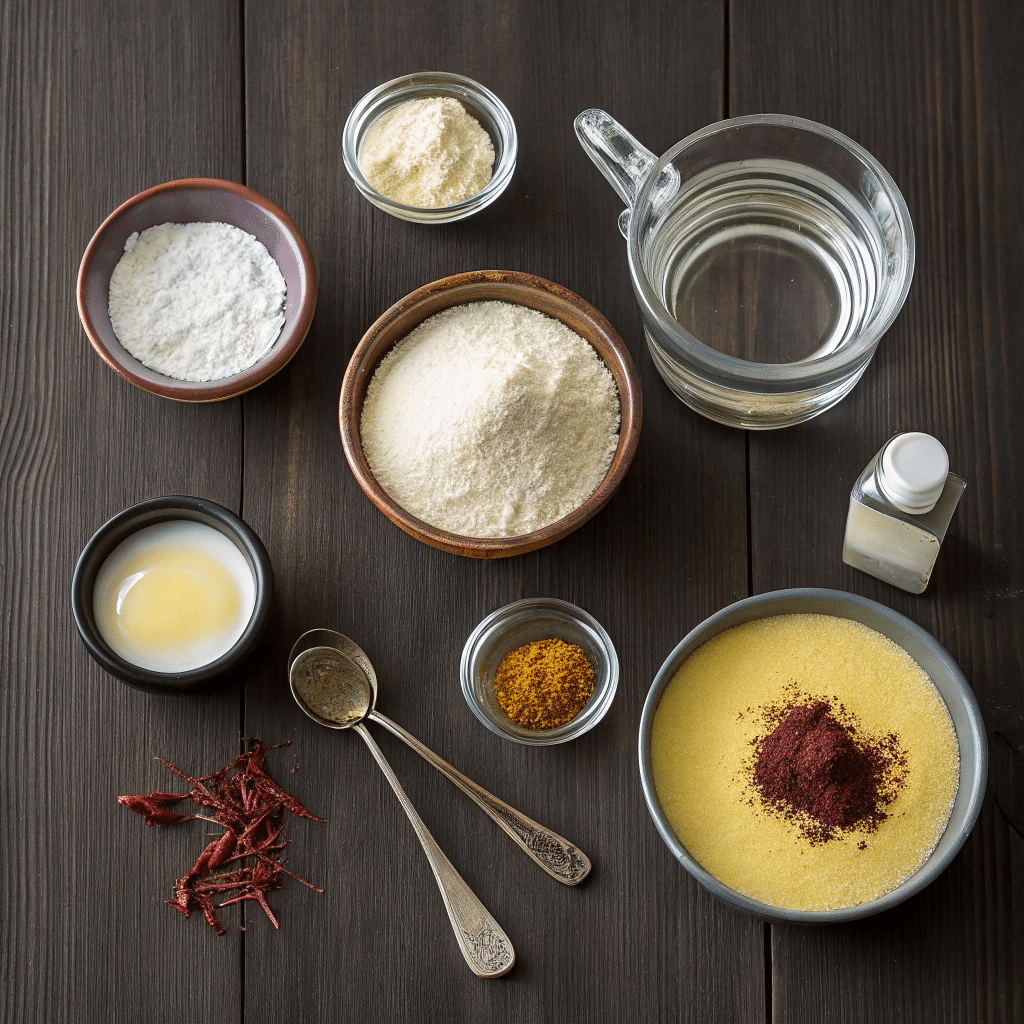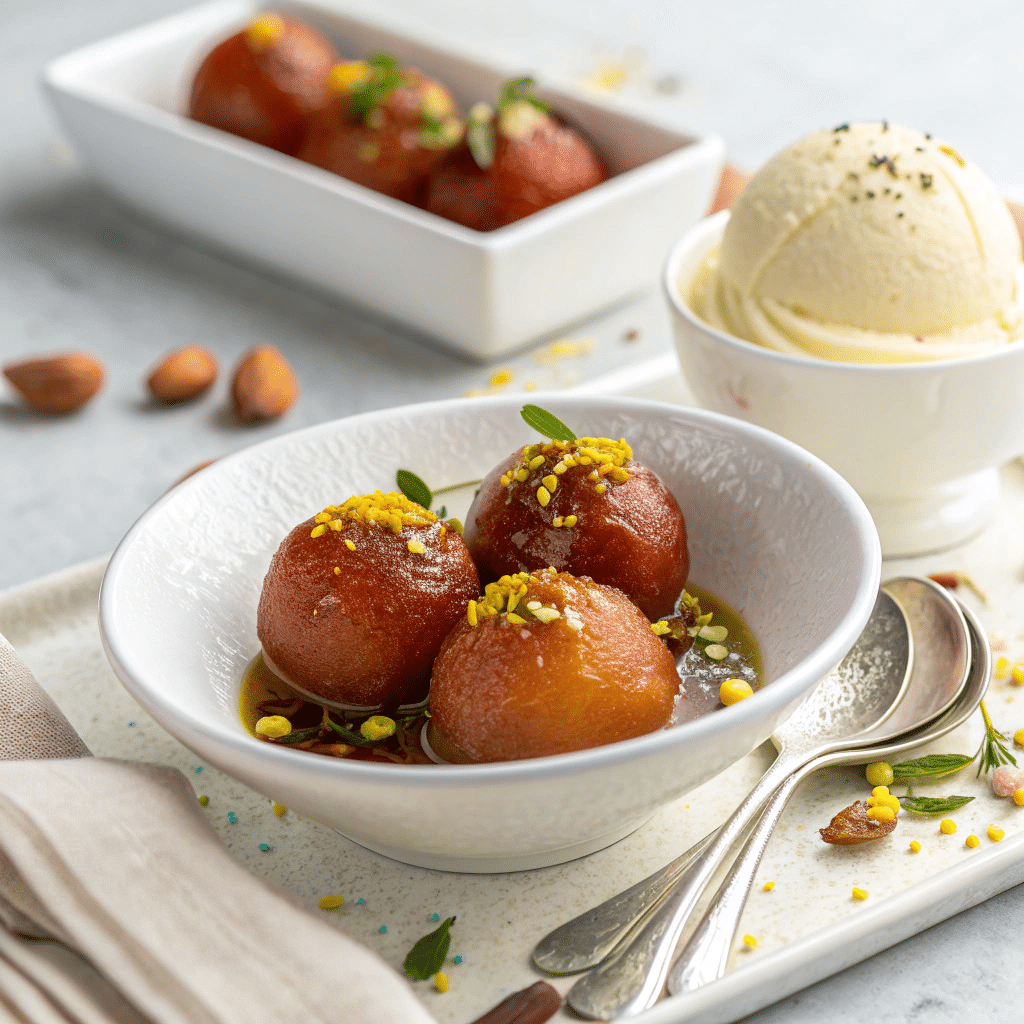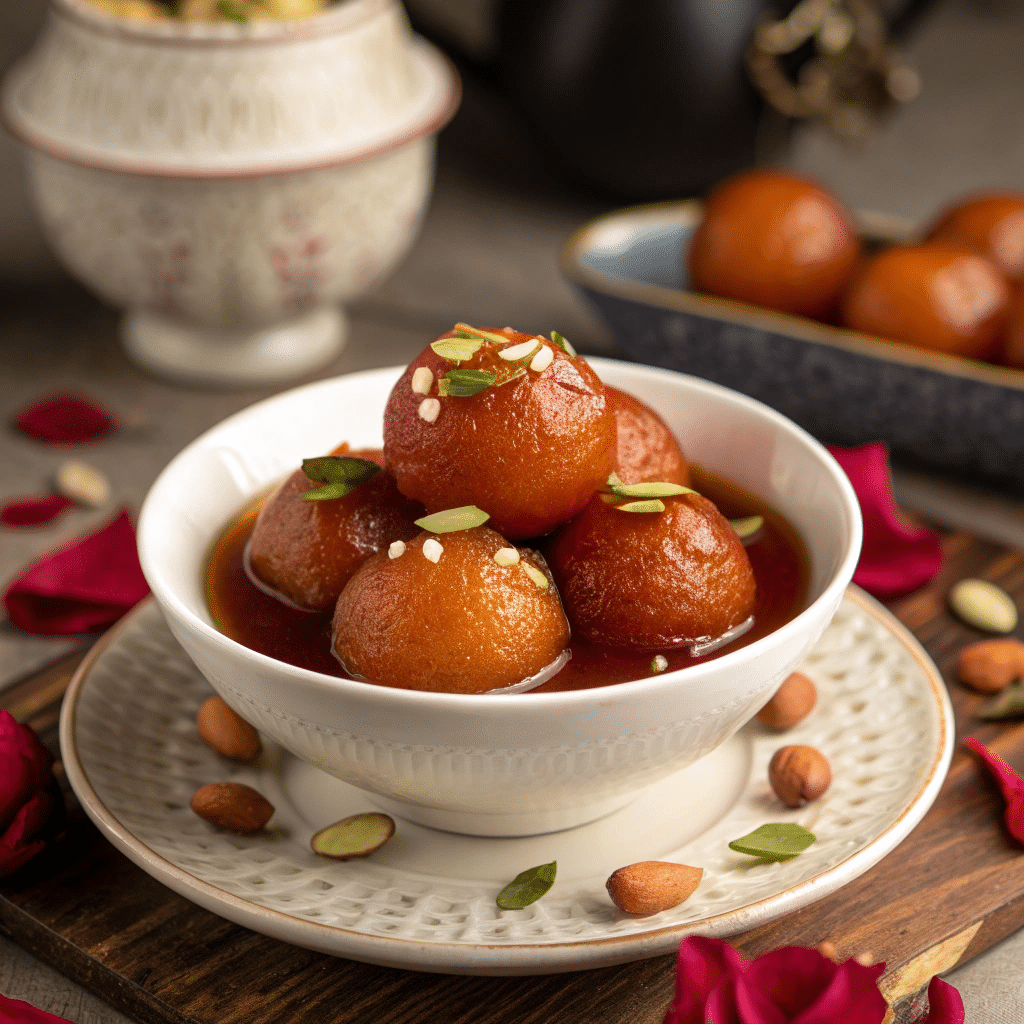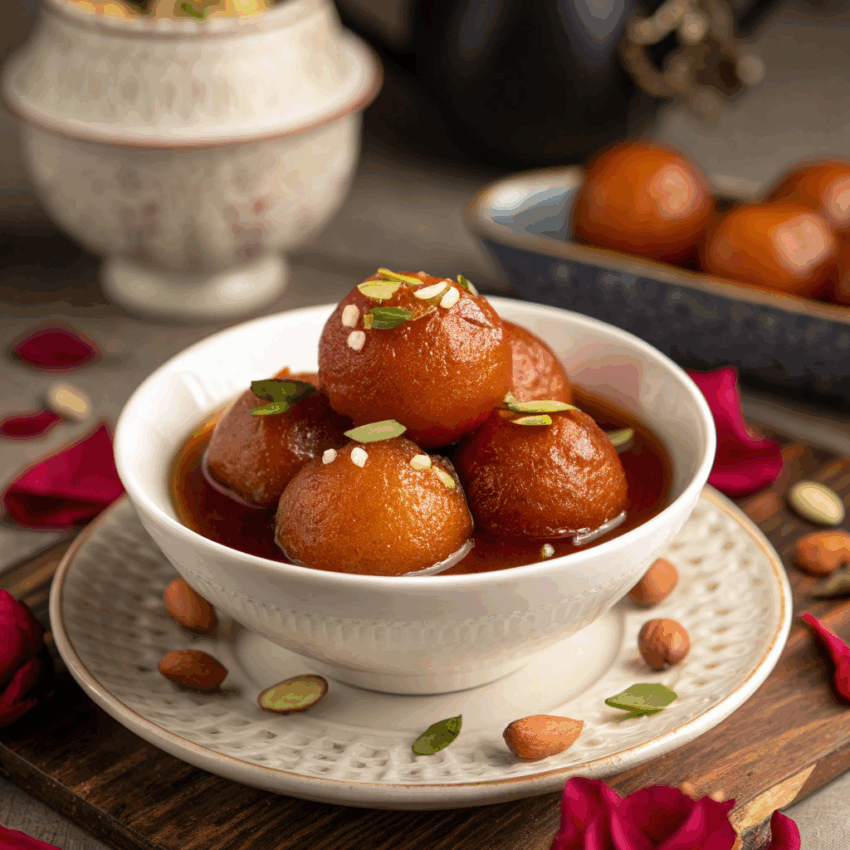There’s something magical about sinking your spoon into a soft, syrup-soaked ball of sweetness. If you grew up in a South Asian household, you already know what I’m talking about—gulab jamun. This classic treat is one of the most beloved Pakistani desserts and a staple at weddings, Eid feasts, and family gatherings.
I’ve had my fair share of these melt-in-your-mouth sweets over the years, both in Pakistan and abroad. And let me tell you, there’s nothing like a homemade version. Today, I’m walking you through my tried-and-true Pakistani gulab jamun recipe—one that balances texture, flavor, and nostalgia all in one bite.
What is Gulab Jamun?
Think of gulab jamun as the crown jewel of Indian desserts and Pakistani food traditions. They’re bite-sized dumplings made with milk solids (traditionally khoya or milk powder), fried in ghee or oil, and soaked in a fragrant sugar syrup infused with cardamom and rose water.
The name says it all: “gulab” translates to rose, while “jamun” is a fruit native to South Asia that looks a lot like the small round sweet.
Over the years, this jamun recipe has spread across the globe, but its charm stays rooted in the cozy kitchens of South Asia.
Ingredients You’ll Need

Here’s everything you’ll need for this recipe. Don’t be intimidated—it’s simpler than it looks!
For the Gulab Jamun Balls:
- 1 cup milk powder
- ¼ cup all-purpose flour
- 2 tbsp semolina (optional but gives great structure)
- ¼ tsp baking soda
- 2 tbsp clarified butter (ghee)
- ¼ cup whole milk (add more if needed for dough)
For the Sugar Syrup:
- 2 cups sugar
- 2 cups water
- 4–5 green cardamom pods, lightly crushed
- 1 tsp rose water (or a few drops of rose essence)
- 1–2 saffron strands (optional, for color and aroma)
For Frying:
- Ghee or neutral oil
Step-by-Step Method
1. Prepare the Syrup
Start with the sugar syrup because the jamuns need it ready when they come out of the fryer. In a saucepan, combine sugar, water, and cardamom. Simmer until the sugar dissolves completely. Add rose water and saffron, then set aside on low heat to keep it warm.
2. Make the Dough
In a mixing bowl, sift together milk powder, flour, and baking soda. Add semolina if using. Drizzle in the ghee and rub it gently into the mixture with your fingertips until it looks crumbly. Slowly add milk, a tablespoon at a time, to bring everything together into a soft dough. Don’t knead too much—just enough to form a smooth ball.
3. Shape the Jamuns
Divide the dough into small equal pieces and roll them into smooth balls. Cracks will cause them to break while frying, so take a moment to smooth the surface with light, circular movements in your palms. Aim for the size of a large marble—they’ll expand as they cook and soak up syrup.
4. Fry to Perfection
Heat ghee or oil in a deep pan over medium-low heat. Drop a tiny piece of dough in first—it should rise slowly to the surface, not burn instantly. That’s your sign the oil is ready. Fry the jamuns in small batches, stirring gently so they brown evenly. They should turn a deep golden brown, not dark brown.
5. Soak in Syrup
As soon as the jamuns are golden, lift them out and slide them into the warm syrup. Let them soak for at least 2 hours. The longer, the better—the syrup seeps in and gives you that iconic melt-in-your-mouth texture.
Serving Suggestions

- Serve warm with chopped pistachios or almonds sprinkled on top.
- Pair them with vanilla ice cream for a modern twist.
- Place them on a white plate for some gorgeous gulab jamun photography—that syrupy glaze is a food photographer’s dream.
Tips for the Best Gulab Jamun
- Don’t rush the frying. Medium-low heat is key for even cooking.
- Make sure your syrup isn’t too thick—otherwise the jamuns won’t absorb properly.
- Use clarified butter instead of oil for an extra layer of richness.
- Always keep the syrup warm while adding the jamuns—it helps them soak better.
Why This Recipe Works
This recipe combines traditional flavors with a simple method anyone can follow at home. You don’t need professional tools or fancy ingredients—just patience and a love for sweets. Whether you’re making them for Eid, Diwali, or just a cozy weekend at home, these little treats never disappoint.
I remember the first time I tried making gulab jamun from scratch. I was nervous about the dough falling apart or the balls turning out rock-hard. But once I slowed down and trusted the process, everything came together. Now, it’s one of those recipes I can almost do with my eyes closed.
Conclusion
There you have it—an easy, reliable Pakistani gulab jamun recipe you can whip up at home. It’s a dessert that connects generations, sparks memories, and brings joy with every bite. Whether you’re new to Indian dessert recipes or a lifelong fan, give this a try and let your kitchen fill with the aroma of cardamom and rose.
And if you do make them, don’t forget to snap some photos. These golden beauties deserve a spot in your Indian food photography collection!

Pakistani Gulab Jamun
Ingredients
Method
- Mix sugar, water, and cardamom in a pan. Simmer until sugar dissolves. Add rose water and saffron. Keep it warm.
- In a bowl, combine milk powder, flour, semolina (if using), and baking soda. Add ghee and mix with your fingers until crumbly. Slowly add milk until you have a soft dough. Don’t over-knead.
- Divide into small equal portions and roll into smooth, crack-free balls (size of large marbles).
- Heat ghee/oil on medium-low. Test with a small piece of dough—it should rise slowly. Fry balls in batches, stirring gently, until golden brown all over.
- Remove fried balls and add directly into the warm syrup. Let them soak at least 2 hours before serving.
Notes
- If your dough feels too sticky, add a pinch more flour. If it’s too dry, add a spoonful of milk.
- Always fry on medium-low heat. If the oil is too hot, the outside will burn while the inside stays raw.
- Syrup should stay warm while adding jamuns. If it cools down, reheat gently before soaking.
FAQs About Gulab Jamun
1. Can I make gulab jamun without milk powder?
Yes, you can use khoya (reduced milk solids) for a more traditional flavor. But milk powder is easier to find and works beautifully.
2. Why did my gulab jamun turn hard?
That usually happens if the dough is over-kneaded or if the frying temperature is too high. Stick to gentle mixing and medium-low heat.
3. How long do they stay fresh?
They last about 3–4 days in the fridge when stored in syrup. Warm them up slightly before serving for best taste.
4. Can I bake gulab jamun instead of frying?
Technically yes, but the texture won’t be the same. Frying in ghee gives that authentic flavor and soft bite.
5. What’s the difference between Indian and Pakistani gulab jamun?
They’re very similar, but some Pakistani households prefer a slightly lighter syrup and a touch more cardamom. It’s all about family traditions.

